Imaging: Venus, Moon, Pleiades, Galaxies
Posted: 2 March 2017
Clouds returned Saturday afternoon, 25 February 2017. Monday afternoon, 27 February, rain arrived, but not much (0.05"). Tuesday, 28 February, was still cloudy, with more occasional light rain throughout the day (0.22"). Even had a hailstorm (pea-sized) lasting a couple of minutes. The sky partly cleared after sunset. This is a photo (slightly cropped) of the crescent Moon and the planet Venus taken with a handheld iPad Pro 9.7":
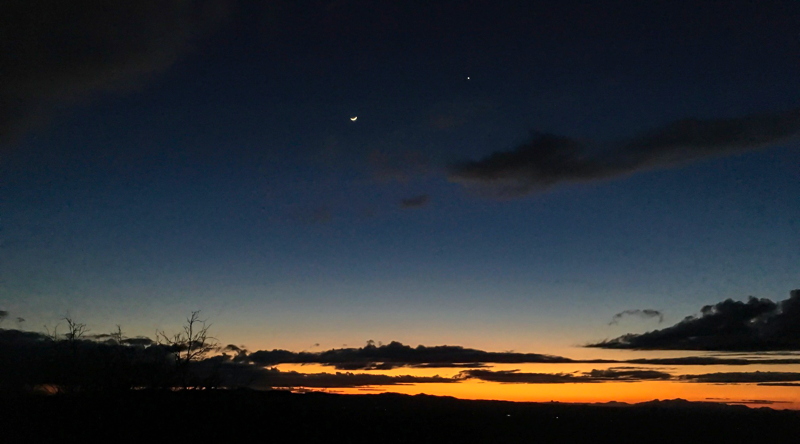
Click or tap on image for larger version
Wednesday, 1 March, dawned clear. As part of my clip-on 8X telephoto lens tests with the iPhone 6s Plus, here are three handheld photos of Kitt Peak National Observatory (65 miles from Cassiopeia Observatory):
Normal lens
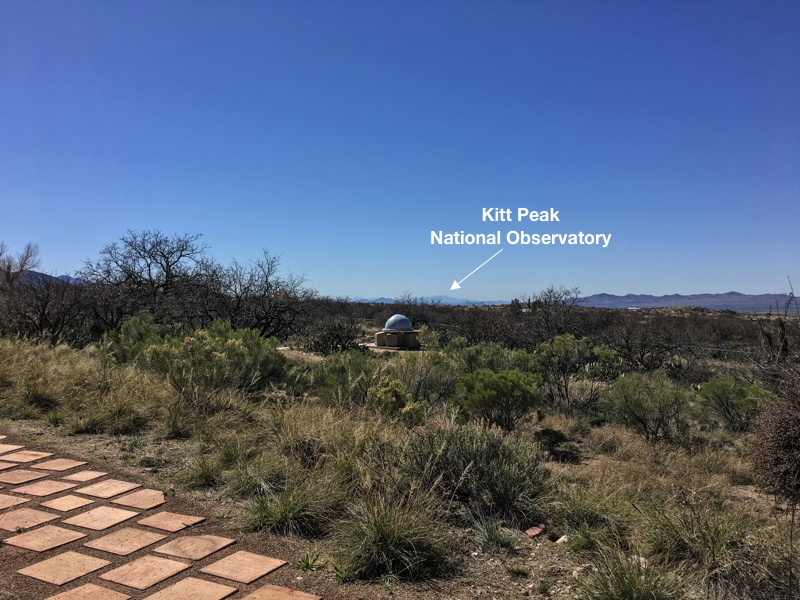
8X lens
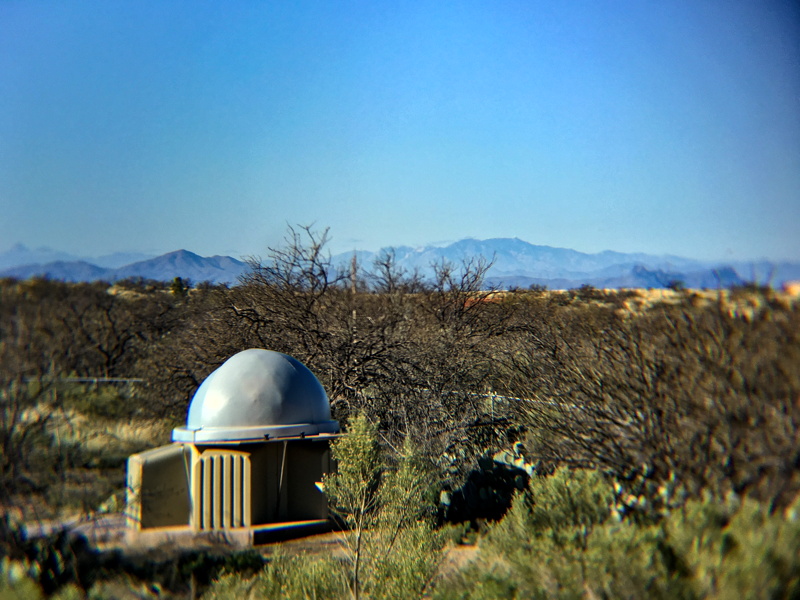
8X lens + full digital zoom
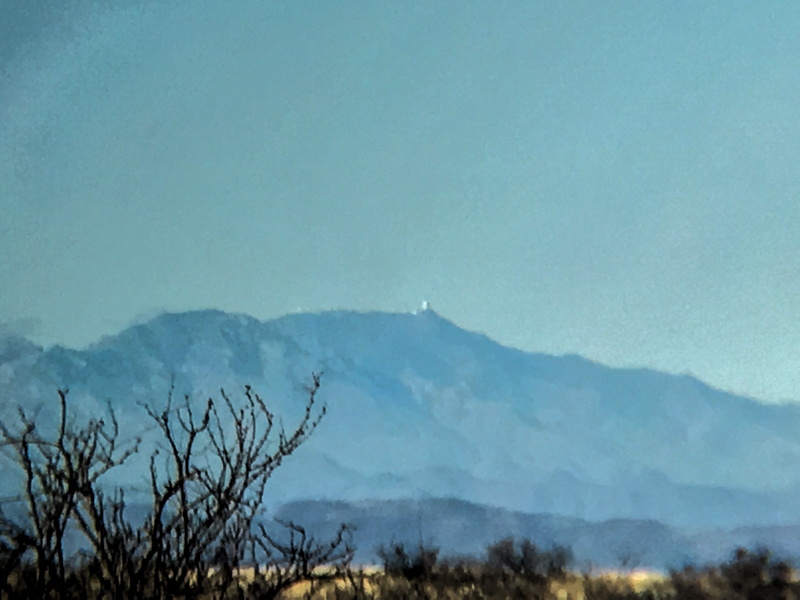
Not too bad for a $15 add-on lens.
|
Open: Wednesday, 1 March 2017, 1809 MST Temperature: 69°F |
Session: 1077 Conditions: Clear |
Equipment Used:
12" f/8 LX600 w/StarLock
Wired AutoStar II handset
2" 24mm UWA eyepiece
2" 2X PowerMate
Camera:
D7200 DSLR
iPhone 6s Plus
1814 MST: LX600 ON, StarLock OFF, High Precision OFF.
1816 MST: viewed Venus, 102X. Nice view of the crescent phase, very similar to the Moon's crescent phase this night.
Mounted the D7200 DSLR at prime focus + 2X PowerMate. Did some HD video recordings at 30 fps, 30 seconds. This is a stack of 918 video frames at 1/1000sec, ISO 400:
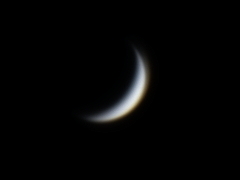
I then did some more tests of the clip-on 8X telephoto lens on the iPhone 6s Plus. This is a handheld photo of the crescent Moon (full-frame) taken with the iOS app NightCap Pro, 1/1000sec, ISO 50:
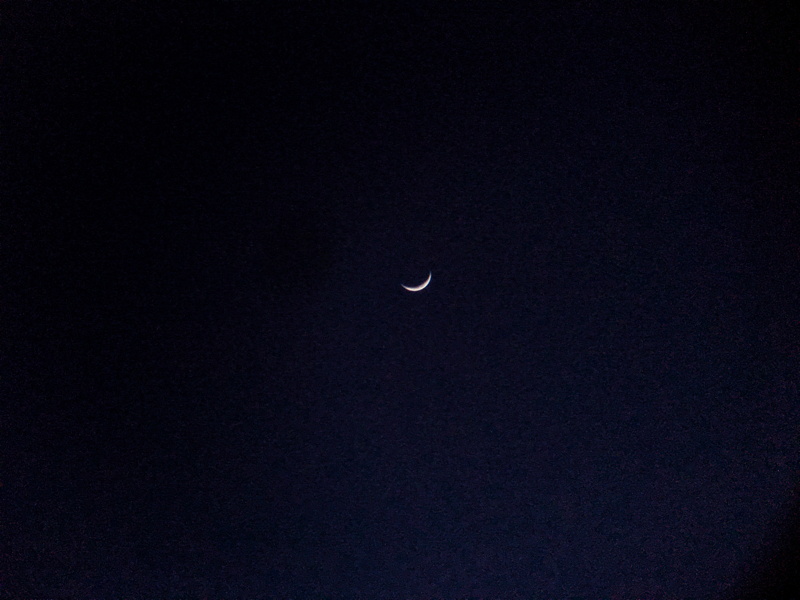
Next, returned to the 12" telescope and mounted the D7200 DSLR at prime focus + focal reducer. Did some imaging of the crescent Moon. This is a 1/320sec, ISO 400, exposure:
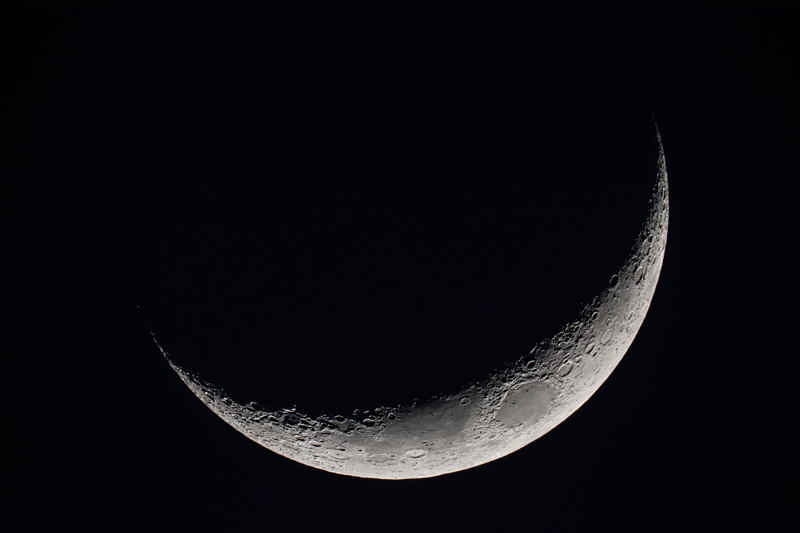
1845 MST: viewed the Moon and Earthshine using the 12x50 binoculars. Lovely view. Also looked at Venus using the binoculars. The planet's crescent phase was seen in the 12x50 binoculars.
1900 MST: began observing the Moon in the 12" telescope, 102X. Saw that a star was about to be occulted so began monitoring it. I grabbed this quick handheld photo of the star and Moon using the iPhone 6s Plus with NightCap Pro (with lots of digital noise due to the high ISO setting):
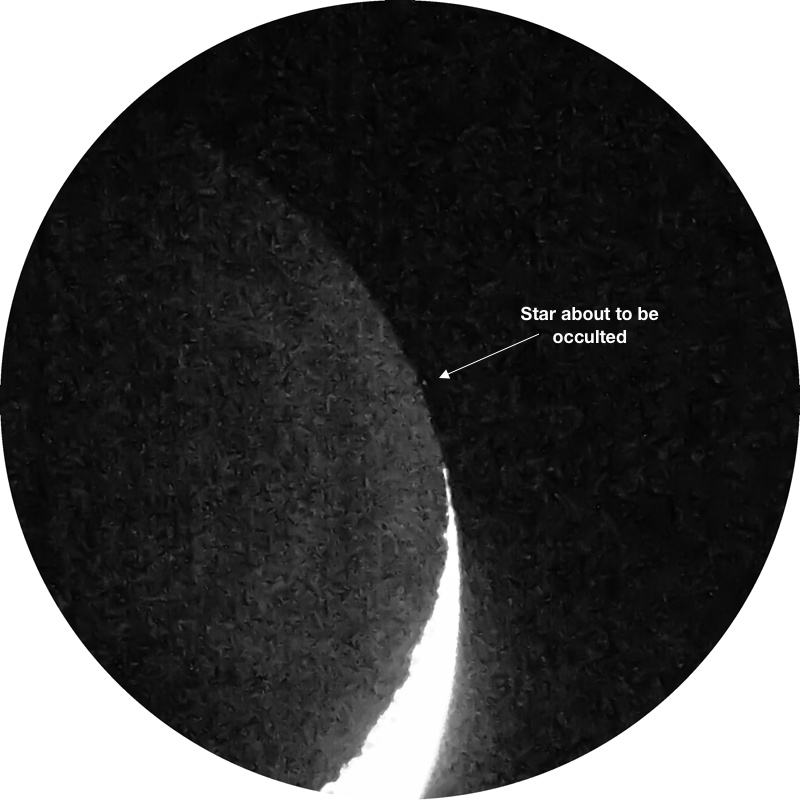
1910 MST: star occulted.
1922 MST: began HD video recording tests of Rigel and Sirius, prime focus + 2X PowerMate, in an attempt to image Sirius B (the "Pup Star"). Was not successful at capturing the Pup Star. Also tried to visually see it this night, 203X, but was not successful at that either.
2000 MST: began setting up the iOptron SkyTracker Pro with the D7200 DSLR and 70-300mm lens:
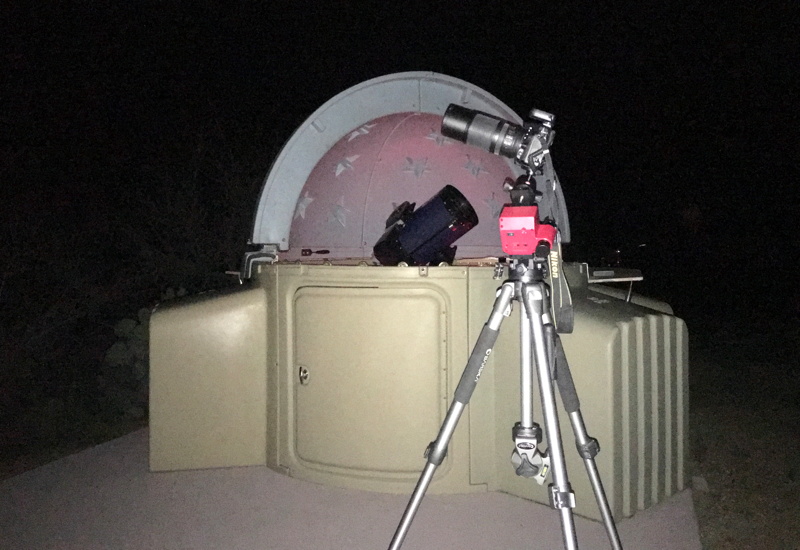
Focused using the Moon. This is a slightly cropped, f/5.6, 1sec, ISO 400, FL 300mm, photograph of the Moon showing Earthshine (and two stars below the Moon):
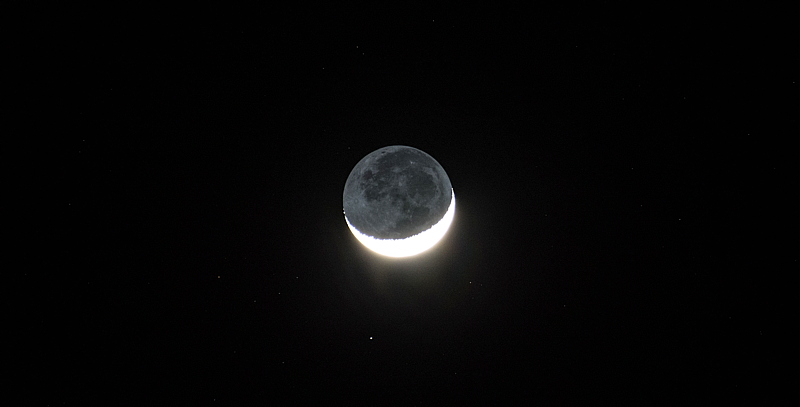
I then polar aligned the SkyTracker Pro using the iOptron iOS app. 2021 MST: was now ready to begin imaging M45 (the Pleiades) once the Moon was lower in the sky.
While waiting, I returned to the 12" telescope and viewed the following galaxies, 102X: M108, M82, M51 (Whirlpool Galaxy), and NGC2683. I hoped to image some of these galaxies during this session in Cassiopeia Observatory.
2045 MST: began imaging the Pleiades. This is a stack of 10 f/5.6, 1 minute, ISO 3200, FL 300mm, White Balance Auto, tracked images with the SkyTracker Pro:
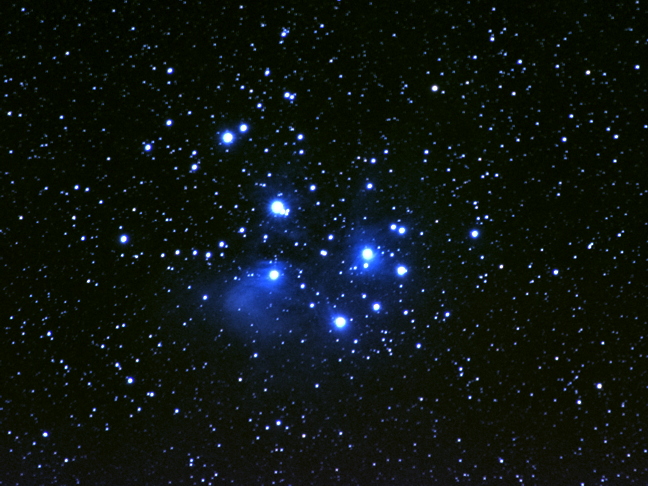
This is a single (full-frame) tracked f/5.6, 2 minutes, ISO 6400, FL 300mm, image of M45 (the Pleiades):
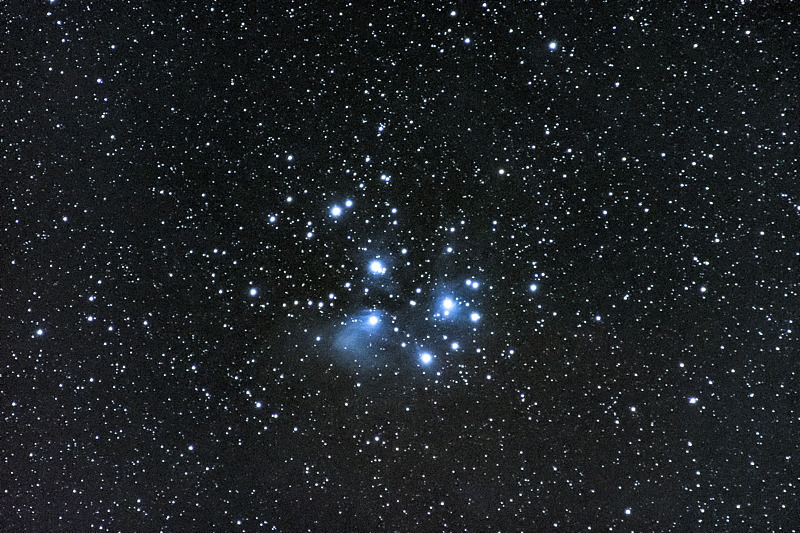
2106 MST: ended SkyTracker Pro imaging. Mounted the D7200 DSLR on the 12" telescope at prime focus + focal reducer. Focused with the Bahtinov Mask using the star Regulus, and locked the primary mirror.
2118 MST: slewed to M82 (the "Cigar Galaxy"). StarLock ON. This is a StarLock autoguided 1 minute, ISO 6400, White Balance Auto, slightly cropped:
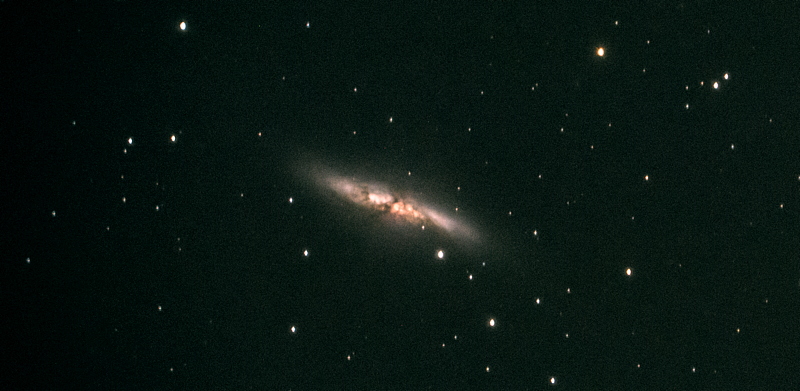
This is M108 (galaxy), StarLock autoguided 5 minutes, ISO 6400, White Balance Auto, slightly cropped:
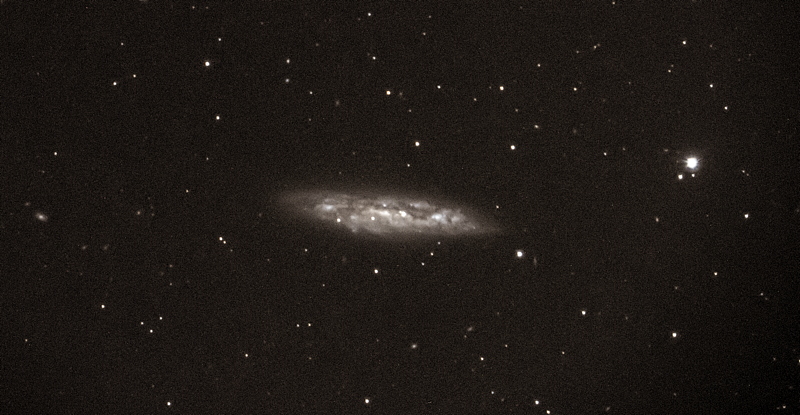
The last galaxy imaged this night was M51 (the "Whirlpool Galaxy"), StarLock autoguided 5 minutes, ISO 6400, White Balance Auto, slightly cropped:
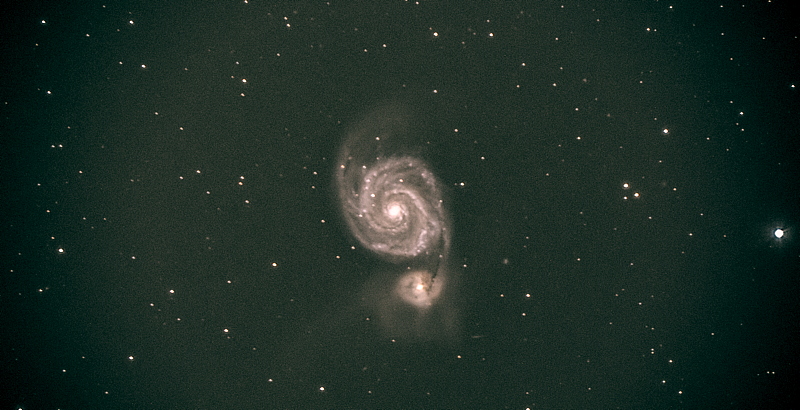
2155 MST: ended imaging. StarLock OFF. 2204 MST: LX600 OFF.
|
Close: Wednesday, 1 March 2017, 2219 MST Temperature: 46°F |
Session Length: 4h 10m Conditions: Clear |
Comments are welcome using Email. Twitter users can use the button below to tweet this report to your followers. Thanks.
Cassiopeia Observatory Home Page
Copyright ©2017 Michael L. Weasner / mweasner@me.com
URL = http://www.weasner.com/co/Reports/2017/03/02/index.html
